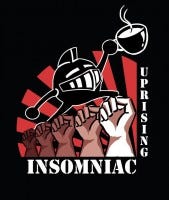
Featured Blog | This community-written post highlights the best of what the game industry has to offer. Read more like it on the Game Developer Blogs or learn how to Submit Your Own Blog Post
Conflict other than Competition
In games, we often use combat/competition - fighting, killing, besting - as the basis for conflict in our created worlds. Are there alternatives and what are they?

This post started as a reply to this blog post by Poya Manouchehr. I heartily recommend giving it a quick read first.
Contents
The idea is that engrossing games need to blend gameplay with narrative - gameplay to hook the players in early, narrative to keep them playing for an extended period of time. Dramatic conflict drives narrative; No conflict means no plot means boring means no incentive to continue playing.
Combat easiest way to create Conflict?
In his post, Poya Manouchehr observes that a good percentage of game narrative revolve around combat.
Rather than combat being the easiest way to create conflict, I would say it is the most established given the sheer volume of precedent data, movies, books, games published before. Given this wealth of material, it is easier to string together a narrative by playing with what has come before. It's easier because there's more reference data to draw from.
Competition and Combat
It is important to differentiate combat from competition. Combat is a narrative context; Competition is a gameplay dynamic, of which combat is a subset.
It is pretty easy to change a narrative context. Instead of Master Chief shooting bad aliens, he's just injecting happy-serum from range and those aliens are collapsing from sheer overdose of joy juice. Being good sports, they also want to inject Master Chief full of joy juice as well. Far-fetched, but it meets the requirement.
A difficulty with using something other than competition-as-conflict is integrating the gameplay into your narrative conflict.
Let's say I want to break "new" ground - Introduce conflict into a cooking game, say Cooking Mama meets Julie & Julia. The dramatic conflict in Julie/Julia comes from managing real-life with the dream of cooking - how to highlight these competing needs? You can probably overlay a time-management simulation on top of the cooking simulation (You only have so much time to cook depending on how fast you clear the time-management minigame) but that feels distinctly un-fun.
It is so much easier to do Cooking Mama meets Iron Chef - compete against teams in competitions and earn honors. All the beef you have against the antagonists will be settled on the cooking ground.
Working without Competition
aka game modes.
Benchmarks
The designer sets a rule: Do the following action/s with the following constraints and be rewarded. Rhythm/music games make extensive use of this in single-player/co-op campaign modes, as do Jumping portions of platformers.
The good: Conflict comes from pressure to achieve a certain standard.
The bad: It can be very rigid - get at least 1 star on this level or you will never see the next level of Angry Cows.
Balancing
You are the bus/train operator aiming to cover the country with your vehicles. You are the poor sod who inherited the derelict space station for alien races. You are the building operator who wants to build the tallest tower. To do that, you need to "balance" often directly opposing needs, i.e. keep the indicator somewhere in the middle of the sliding scale. Some scales have 2 defined extremes (law-chaos) while others only have 1 (keep your finances in the black).
The good: As a subset of the "Neutral Benchmark" dynamic, you now have multiple standards, but you have the choice of which standards to choose to meet.
The bad: Increased complexity since you have more conditionals.
Open World
The world is your oyster, and you are left to figure out what to do with it. The antithesis of "Benchmarks", basically you supply systems and leave the player to explore those systems. A ludologist's dream.
The good: The player chooses what to achieve (ownership of action), which is very empowering.
The bad: All players crave direction at some level and by direction I mean limitations, particularly on actions. Otherwise we will all be out playing the open world game called real life 24/7. Too much freedom is scary. For every player who enjoys Minecraft, at least one will have logged in, gotten lost and lost interest.
Hell is other People
You are a crusader lord plotting for the Platinum Throne of the entire continent. Or a guy wrapped in a rug on a journey to that distant mountain. Or just a bloke waiting for your date to show up. You are not strong enough alone to effect the change you wish, but the people you can do it with are generally engimas to you except through their overt actions. Are they friend or foe?
The good: Conflict comes from the uncertainty in which every action is taken and the dynamics of relationships as they change over time.
The bad: In games with more than 1 player, you are essientially "outsourcing" your conflict to the players with all its attendent risks. In games with 1 player, the difficulties of faking AI personalities that are both logical and "human-like" is worthy of an article in itself.
Conclusions?
To drive players to play, we frame our mechanics with aesthetics that provide meaning for the player beyond what the dynamics can provide. A key reason for players to come back and play then is to resolve the outstanding conflict from the previous session. Creating conflict separate from gameplay is like being the groundskeeper for a Premier League game: what you do has at best a peripheral effect on the interesting event.
About the Author
You May Also Like









